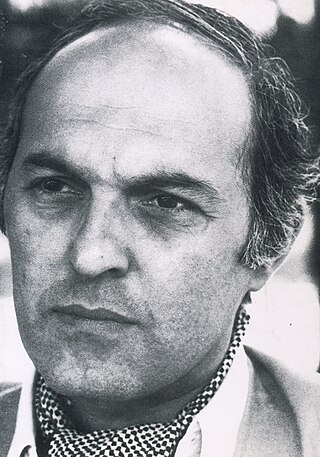
The Musée de Cluny, officially Musée de Cluny-Musée National du Moyen Âge, is a museum of medieval art in Paris. It is located in the 5th arrondissement of Paris, bordered by square Samuel-Paty to the south, boulevard Saint-Michel to the west, boulevard Saint-Germain to the north, and rue Saint-Jacques to the east.

Simon Vouet was a French painter who studied and rose to prominence in Italy before being summoned by Louis XIII to serve as Premier peintre du Roi in France. He and his studio of artists created religious and mythological paintings, portraits, frescoes, tapestries, and massive decorative schemes for the king and for wealthy patrons, including Richelieu. During this time, "Vouet was indisputably the leading artist in Paris," and was immensely influential in introducing the Italian Baroque style of painting to France. He was also, according to Pierre Rosenberg, "without doubt one of the outstanding seventeenth-century draughtsmen, equal to Annibale Carracci and Lanfranco."

Louis-Jean-François Lagrenée was a French rococo painter and student of Carle van Loo. He won the Grand Prix de Rome for painting in 1749 and was elected a member of the Académie royale de peinture et de sculpture in 1755. His younger brother Jean-Jacques Lagrenée was also a painter.
Michel Laclotte was a French art historian and museum director, specialising in 14th and 15th century Italian and French painting.

Auguste-Barthélemy Glaize (1807–1893) was a French Romantic painter of history paintings and genre paintings.

Goudji is a French sculptor and goldsmith of Georgian origin who was born in Soviet Georgia.

Pierre-Jules Cavelier was a French academic sculptor.

Pieter van Mol or Peter van Mol was a Flemish painter known for his history paintings of religious subject matter, and to a lesser extent for his allegorical compositions, genre scenes and portraits. His style was profoundly influenced by Rubens, Abraham Janssens and Artus Wolffort. He was court painter to the King and Queen of France.

Daniel Rabel was a Renaissance French painter, engraver, miniaturist, botanist and natural history illustrator. He was the son of Jean Rabel (1545–1603) who was official artist at the court of Henri III. Rabel was first employed as a portrait painter by Marie de Medicis, the second wife of Henry IV of France. He served as Engineer in Ordinary for the King for the provinces of Brie and Champagne.

Diana Widmaier Picasso is a French art historian specialized in modern art, living in Paris.

Henri Guinier was a French portrait and landscape painter.
Gustave Achille Gaston Migeon was a French historian of the arts of the world.
Jeanne Marie Thérèse Vandier d'Abbadie (1899–1977) was a French Egyptologist.

Marie Frédéric Eugène de Reiset was a French art collector, art historian and curator. He served as curator of the department of prints and drawings at the Louvre and as director-general of France's Musées Nationaux.
Josette Hébert-Coëffin was a French sculptor, medallist and a recipient of a 1937 Guggenheim Fellowship.

The expansion of the Louvre under Napoleon III in the 1850s, known at the time and until the 1980s as the Nouveau Louvre or Louvre de Napoléon III, was an iconic project of the Second French Empire and a centerpiece of its ambitious transformation of Paris. Its design was initially produced by Louis Visconti and, after Visconti's death in late 1853, modified and executed by Hector-Martin Lefuel. It represented the completion of a centuries-long project, sometimes referred to as the grand dessein, to connect the old Louvre Palace around the Cour Carrée with the Tuileries Palace to the west. Following the Tuileries' arson at the end of the Paris Commune in 1871 and demolition a decade later, Napoleon III's nouveau Louvre became the eastern end of Paris's axe historique centered on the Champs-Élysées.
Albert Henraux, or Albert S. Henraux, or Albert Sancholle Henraux, (1881-1953), was an important French arts administrator who served as President of the Arts Council of National Museums, President of the Commission de Récupération Artistique, and President of Friends of the Louvre.

Germain Brice (1653–1727) was a French author, best known for his book Description de la ville de Paris et de tout ce qu'elle contient de plus remarquable . The work, which was published in several editions and continually expanded, was first published in 1684. In some of the later editions the addition Nouvelle was used in the title. This book was the most popular travel guide on the city of Paris in the 17th and 18th century.

The Judgement of Solomon is an oil on canvas painting of the judgement of Solomon by the French artist Poussin, from 1649. Produced during his 1647-1649 stay in Rome, it is now in the Louvre, in Paris. It measures 101 by 150 cm. Art historians largely consider it as one of the artist masterpieces, in the art of the 17th century French School and French art as a whole. Several engravings were produced of the work.















